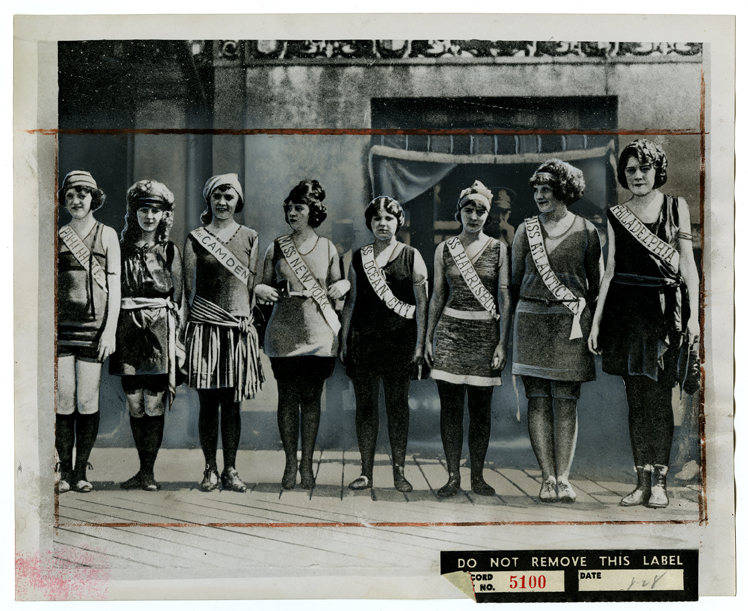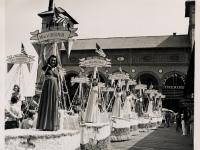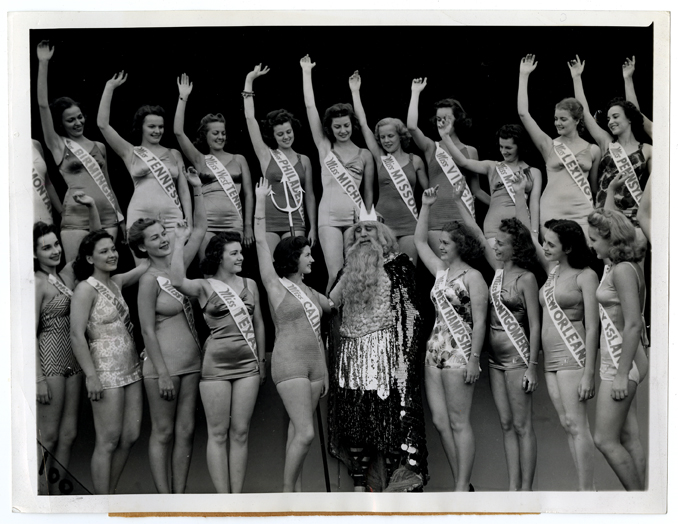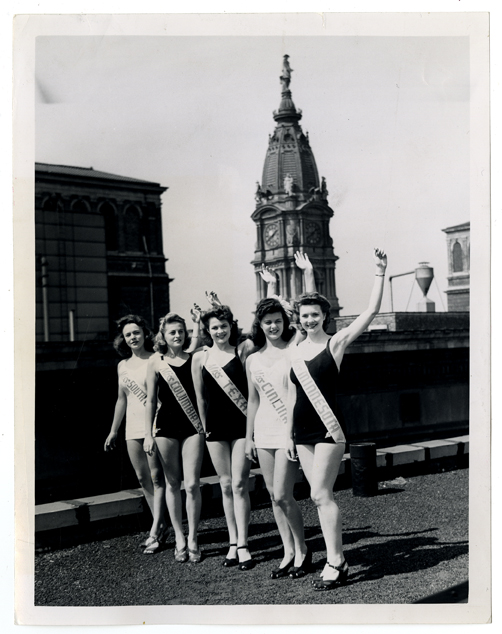This Saturday, January 12th, a new Miss America will be crowned amidst the glitz and glamour of the Las Vegas strip, a far cry from the pageant's humble origins on the Atlantic City boardwalk. Thankfully, for those who yearn for the days when bathing beauties roamed the Jersey shore, you can travel back in time with these historic images recently added to HSP's Digital Library.
The Miss America pageant was the brainchild of the Businessmen's League of Atlantic City, who, in an effort to attract tourists to the shore destination after Labor Day, organized a so-called Fall Frolic in September 1920. The most popular event at the Frolic was a parade of maidens who were wheeled down the boardwalk in wicker chairs to the cheers of an adoring crowd. The success of the parade, as well as the current popularity of newspaper-sponsored beauty contests in which winners were selected based on photo submissions, planted the seed for an "Inter-City Beauty Contest" the following year.

Billed as a beachfront "bather's reveue" of "thousands of the most beautiful girls in the land," the first Miss America pageant in September 1921 attracted only a handful of participants from a number of East Coast cities, including New York, Philadelphia, and Camden. The contest commenced with the arrival of "King Neptune" at the Atlantic City Yacht Club and consisted of popularity and beauty contests judged according to both the crowd's applause and points awarded by a panel of judges. The winner was 16-year-old Margaret Gorman of Washington, D.C., who received $100 and a "Gold Mermaid" trophy. Gorman notably resembled Mary Pickford, one of the most popular film stars of the era, and even garnered praise from admirers like American Federation of Labor President Samuel Gompers. Speaking of Gorman to The New York Times, Gompers reportedly remarked "she represents the type of womanhood America needs--strong, red-blooded, able to shoulder the responsibilities of homemaking and motherhood. It is in her type that the hope of the country rests."
Within a few years time, the Miss America contest quickly grew into a popular annual spectacle, attracting more than 70 participants by 1923. Until 1944, when a $5000 scholarship was awarded for the first time, winners primarily earned fees for appearances and endorsements. These fees often proved quite lucrative; during her reign, Miss America 1926, Norma Smallwood, grossed $100,000, exceeding the yearly income of both Babe Ruth and the President of the United States. Throughout the 1920s and 30s, contestants represented a range of sponsors at the pageant, appearing on behalf of cities, resorts, and theaters. A rule requiring participants to represent states went into effect in 1938, though every state was not represented at the pageant until 1959. By that time, the Miss America pageant took place at the Atlantic City Convention Center, the first of many changes that progessively moved the contest away from its beachy beginnings. Another similar change occured in 1948 when, for the first time, Miss America was crowned in an evening gown rather than the traditional bathing suit.
While the popularity and allure of the Miss America pageant has faded over time, the contest earned an enduring legacy as part of the history of Atlantic City and the wider mid-Atlantic region in the 20th Century. For a taste of Miss America's Philadelphia connections, check out this photograph of contestants from the 1942 pageant posing with City Hall as a backdrop. Throughout the 1940s, contestants routinely toured Philadelphia before departing for Atlantic City on the "Shore Queen" out of Broad Street Station. Smile, ladies, William Penn is watching!



